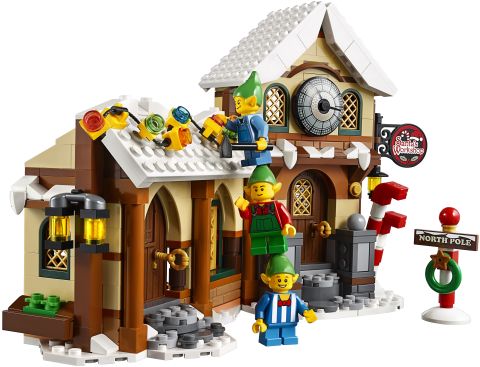I ran across the gallery of a German LEGO fan who’s models really impressed me. He goes by the name CustomBricks, and mostly designs LEGO military models. They are excellent and worth checking out. I’m not so much into military stuff, but there are a couple of non-military LEGO designs by CustomBricks that I really liked, and thought to share with you. 🙂

The first one is a the LEGO MINI Cooper Caravan. This is an extension for the recently released #10242 LEGO Creator MINI Cooper. We have talked about this set before and some of the fun conversions people have been doing with it (see links at the end of this post). And I think this caravan is another extremely cute design. It matches the LEGO MINI Cooper in size, color and style, and comes with a fully detailed exterior and interior. The total piece count is 965 (including the hitch), and the dimensions are (W/H/D) 12.1/13.1/23.5 cm. If you have the #10242 LEGO MINI Cooper this may be a fun project to consider. You can see more pictures at CustomBricks’ flickr gallery here, and you can buy the PDF instructions on his website here.

CustomBricks also designed similar extensions to the #10220 LEGO Volkswagen T1 Camper Van; a small, 1-axle caravan, a larger 2-axle caravan, a trailer with a Vespa scooter, a luggage-trailer, and a trailer with boat. The 1-axle caravan is quite similar to the LEGO MINI Cooper version, but with the colors and decors matching the LEGO VW Camper. The 2-axle caravan is practically a palace with everything from a toilet/shower unit, opening doors, opening tailgate and trunk, seats that convert into a bed, roof-awning, sun-loungers, outside table and more! The smaller model is about the same size as the caravan for the LEGO MINI Cooper, and the larger model is (W/H/D): 20.4/13.5/30.5 cm. You can see more pictures at CustomBricks’ flickr gallery here, and you can also buy the PDF building instructions on his website here.


And as I mentioned there are also three smaller trailers for the LEGO VW Camper; one with a scooter (the scooter itself is an excellent design!), then there is a bit larger trailer that can hold a standard LEGO boat, and a luggage-trailer that you can use for holding all kinds of stuff. There are instructions and parts-lists for these as well, if you would like to build one.

I really like custom LEGO sets like these; when someone takes an official LEGO set and makes an extension. It can provide a fun project for others who own the original LEGO set and would like to do something more with it. Not everyone is great at building a LEGO model from scratch – modifications and extensions are a lot easier. Plus it just makes your set so much more unique and special – like so many LEGO fans have these two sets, but how many have a cute little matching trailer attached to it?

CustomBricks provides instructions for many of their models, so if you like them, check them out. And if you don’t have the #10220 LEGO Volkswagen T1 Camper Van, or the #10242 LEGO MINI Cooper, they are available at the Online LEGO Shop.

So what do you think? How do you like these custom LEGO caravans and trailers? Are you planning to build any of them? Feel free to share and discuss in the comment section below! 😉
And you might also like to check out the following related posts:
- LEGO MINI Cooper & Classic Space Fusion
- LEGO MINI Cooper Available Now! (+other versions & modifications)
- LEGO MINI Cooper Coming Soon! (press-release & designer video)
- LEGO Volkswagen Camper Mini in Every Shape & Style!
- Feelin’ the Sixties with the LEGO VW Camper!




















